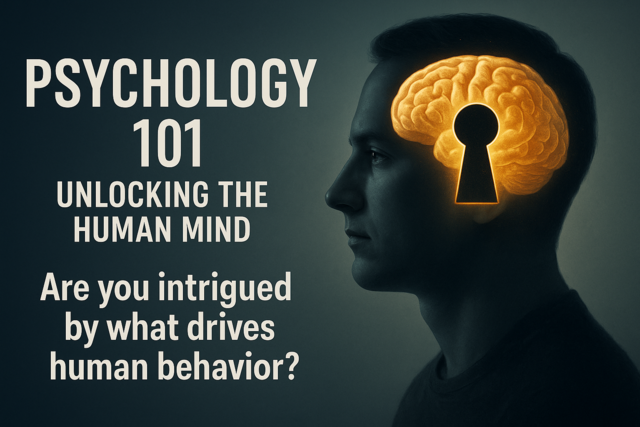Aside from polishing up your own body language skills so they work to your advantage, there are professions in which people rely heavily on reading the body language of others. Sometimes it can be the difference between life and death. As a result, many people take body language very seriously. Knowing what someone might do, based on what their body language is saying, can be crucial in determining what your next step is.
For instance, psychologists pay close attention to their patients' body language to look for feelings they are not expressing verbally. A patient might say, "Sure. I love my father very much." But, while they are saying this their eyes are looking down and their shoulders are slouched. Generally, a person who truly believes what they are saying will say this with an open smile on their face, happy expressive eyes, and with direct eye contact.
The psychologist, by reading the body language of his patient, would probe further about his father, knowing there is something the patient is hiding. In the course of the session, picking up different body language signs enables the doctor to open up the many hidden doors inside the patient's mind, which will lead to the release of this pent-up emotion and ultimately lead to the patient's recovery.
Lawyers also use body language in their careers. They will meet with their client for the first time and analyze his body language. Secondly, based on his assessment, he will guide the client on how to use the appropriate body language that will gain the most approval from the judge and jury. Throughout his daily routine he will have to meet with, and interview, many people involved in his case. He will utilize these same skills to analyze all of the people he encounters. Like the psychologist, if he notices something about a person's body language that makes him suspicious, he will probe further to find underlying information that is not readily given to him.
He will again use his body language reading skills once he enters the courtroom. He will observe the opposing attorney's body language, the judge's body language, and that of the jury. He will keep a careful check on his own body language and make sure he's sending out the correct message to the judge and jury. The most important people are his client, the judge, and the jury, so he will pay extra attention to them. By training his client in the use of body language, he hopes to make a good first impression to the judge and jury. Had he not exercised his skills in this area, who knows what his client would have done once he entered the courtroom? A smart lawyer is not willing to take that chance.
In law enforcement, reading body language is almost as important as the gun police officers carry. Like a lawyer, policemen and police women need to focus on both their own body language and the body language of the people they encounter every day on the job. When they pull someone over for a traffic violation, they want to make sure their own body language is saying, "I'm in control." A typical person who truly feels remorse for running that red light or not stopping fully at the stop sign will be submissive to the police officer's body language. They will more than likely apologize and be given a warning or a ticket. The police officer will be able to read the submissive body language and will not feel threatened. They will act and feel in control of the situation.
Now, this is probably the way most police officers wish every day would go, but that's not the case. Sometimes a police officer will stop a car due to a tail light that is not working, or if he sees a car swerving in the road. The police officer will approach the car and ask the driver to step out. Typically, the driver's body language, combined with his words, will determine what the police officer will do next. If the police officer notices the driver fidgeting or looking back and forth between the officer and his car, there is probably something going through his mind. In order to take control of this situation and maintain safety, the officer might tell the driver that he's not under arrest (at least not yet). He might tell the driver to stay where he is while he runs his license. Of course, when he goes to run the license, he also calls for back-up. He takes his time doing this, approaches the driver again and talks in a calm voice, being as non-threatening as possible. When the back-up arrives, they search the car and find drugs and weapons.
Good call for the police officer. Had he not paid attention to the driver's body language there might have been dire consequences, for the driver was carrying guns and drugs in his car. By being able to effectively read body language, the police officer controlled the situation in the safest possible way and no one was hurt.
Salespeople are also big users of body language. They study their customers, the way they walk, the way they look at certain merchandise, the way they return to certain items for a second and third time. They watch the facial expressions of the customers to determine whether they are contemplating buying the item, or trying to figure out what the item actually is.
What they determine, based on the customers' body language, sets the stage for how they approach the customer. A customer who has been eying a certain piece of merchandise, and has come back to it more than once, is obviously very interested in it. If the salesperson casually, and non-confrontationally, approaches the customer and gives them an added benefit of the item, it may be a benefit the customer hadn't thought of. This could be the deal-closer that makes the customer buy the item. On the other hand, the salesperson may not even bother approaching a customer whose facial expressions portray obvious dislike for the item. Or, if they approach the customer, they might say, "I don't care for this product, either. Let me show you something similar that I think you'll love." It simply takes patience and observation to know how to approach each situation. A salesperson with good body language reading capabilities can be very prosperous in his business.
There is one field that is filled with strong body language that is easily detectable. It is so detectable, that verbal communication is not even necessary, for the most part. It's the field of child care. Children express themselves very openly and directly. When they are dropped off at the childcare facility, the caregivers know exactly what's going on with them by reading their body language. If little Jerry is stomping through the front door with his arms crossed and a frown upon his face, it's obvious he's not had a good morning. It could be something like not getting to eat pudding for breakfast, or not being able to wear his Halloween costume to the childcare facility that day -- it's July. You just never know with children. The caregiver might approach Jerry with open arms and ask him what's wrong. This tells Jerry that he's getting attention and lets him tell his story to someone other than his parents or siblings. It makes the child feel better.
Another child might prance through the door clinging to a ... well, who knows what it is actually. It's a paper plate you can see, but it has bits of colored paper, dried beans, some beads, and it looks like maybe even some hair glued to it. She has both hands tightly grasping it and she's wearing a smile that spreads across her entire face. The caregiver, in this case, would more than likely focus all of her attention on what's in the little girl's hands and say how wonderful it looks and what an artistic job she has done. In reading the little girl's body language the caregiver is able to prepare herself to react in a certain way.
Language patterns are important to us, especially the way in which we utilize our powers of speech. Identifying specific communication patterns in the words that people use, and studying their body language, will help you determine what people are thinking. By focusing your attention on the words people use, we can determine if someone is holding information back, stretching the truth, or even lying.
Small words to look for are "I" and "we." In a situation where a psychiatrist is asking his patient if he got along with his mother and he says, "We got along with her just fine," this should raise your suspicions. Usually someone who feels strongly about their mother would use "I" instead of "we." By using the word "we," it implies emotional detachment or distance.
When asking questions, you might also want to take note if the other person leans back in their chair or tilts their head back slightly before answering your question. This also says they are not comfortable with the question, or are not quite sure how to answer it. Sometimes they will even repeat your question before answering. This symbolizes an attempt at deception, or stretching of the truth.
Of course, facial expressions and eye contact are on the forefront of giving away what a person is feeling. These are generally involuntary motions that just happen. So, pay attention to the tone of the voice and what the facial expressions are while the other person is speaking. If your friend's voice is telling you she'd love to come to your eighth Tupperware party, but her face is saying something different, you know something is wrong.
These patterns tend to be typical of voice patterns and body language patterns. There are a number of things to consider, including the patterns of the eye, legs, arms, hands, head, and posture. It's fairly simple when you are trying to read a body language pattern, but when you mix words into it, you have to weigh them both to determine your outcome.
Body language can be described as a mixture of posture and bodily movement. Research shows that more than 70 percent of our communication is non-verbal when engaged in a face-to-face conversation.
Our body language discloses some of our deepest feelings and thoughts that we have tucked away. Mind you, this is out there for total strangers to see. In addition, nonverbal communication has a much greater impact and consistency than the spoken word. Therefore, if a person's words are not consistent with his body language, you would be wise to rely on the body language as a more accurate indication of his true feelings.
Try to remain aware of the non-verbal communication cues you are showing, and try to keep them positive. Try to remember to smile frequently, keep your arms unfolded and legs uncrossed.
People generally try to create peace and harmony around them. You can make someone feel at ease by duplicating his body language. By doing what he is doing, he will feel more comfortable talking to you. They will not normally notice you are doing this, either. It will help them feel more relaxed and open with you.

























